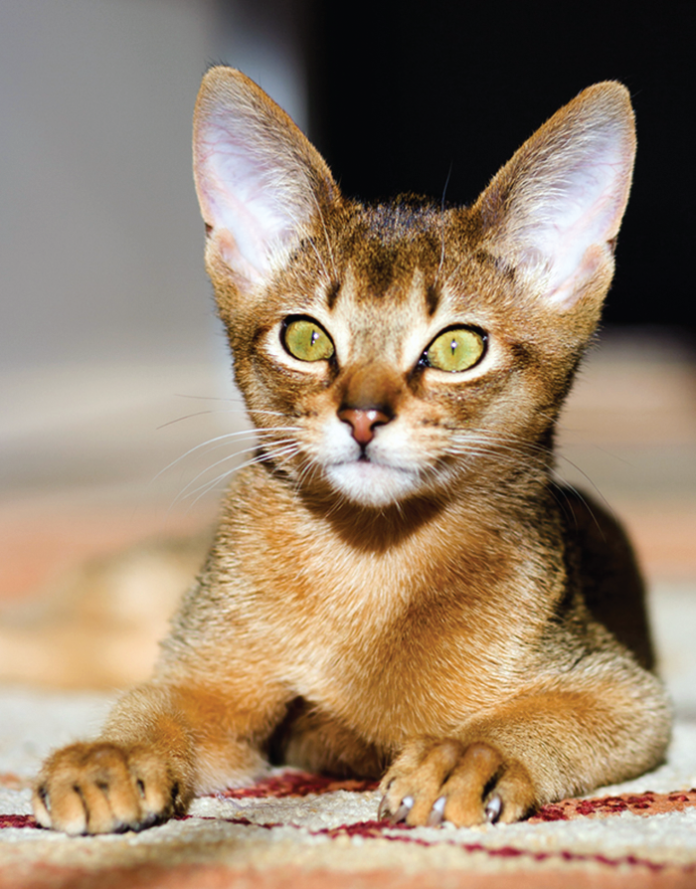Q. I have a 2-year-old male Abyssinian cat that I just found out has two copies of abnormal PRA rdAC gene. He is otherwise healthy and very happy, but we are very concerned, of course. Will you please recommend a supplement that would best aid his eyes, in hopes of prolonging the progression to blindness in the future? My veterinarian has advised me to supplement with as much taurine as possible.
A. Thank you for getting in touch, and I am sorry to hear this news, although very happy that your cat is doing well today. Progressive retinal atrophy (PRA) is a group of genetically mediated degenerative diseases that causes the photoreceptor cells of the retina to deteriorate, ultimately leading to blindness. Perhaps a brief review of what we know about this condition would help.
The retina is a light-sensitive layer of cells at the back of the eye that contains cells called photoreceptors. These cells convert the light that enters the eye through the pupil to electrical signals that are transmitted to the brain and ultimately processed as vision.
The two main types of photoreceptor cells are rods and cones. Rods are responsible for vision during low light conditions, and cones are responsible for detecting color. Cats have many more rod than cone cells in their retina, so while they are good at seeing things in dim light, their color visual acuity is not nearly as good (cone cells do not work well under low light). PRA causes gradual deterioration of these rod and cone cells over time, leading to blindness.
There are two forms of PRA in cats: an early onset form in which the photoreceptor cells develop abnormally and result in blindness at an early age (i.e., in kittens, called retinal dysplasia) and a later onset form in which affected cats most commonly lose their vision later in life, between 2 and 5 years of age. Both of these forms have been well documented in the Abyssinian breed.
With retinal dysplasia, both rods and cones are usually equally affected, resulting in complete blindness, while with later onset PRA, the rod cells usually degenerate first, so night vision is affected first. Ultimately though, the cone cells also deteriorate over time with this condition, leading to complete blindness.
There are two known genetic mutations associated with PRA, the PRA Rdy gene mutation that leads to retinal dysplasia and the PRA rdAC mutation that is found in cats with later onset PRA. Cats with two copies (one from each parent) of the PRA rdAC gene will become blind and can pass this mutation on to their offspring. Cats with only one copy of this mutation do not become blind, but they are carriers of the mutation and can pass it on to their offspring, if they are bred.
Unfortunately, there is no cure for PRA. While there has been suggestion that supplementation with antioxidants may slow the progression, there is currently no strong evidence that this is the case. While taurine supplementation is not likely to harm your cat (as long as doses are not too high), I am sorry to say that it is not likely that taurine will change the course of the disease.
The good news is that cats can tolerate blindness fairly well as long as their environment is consistent and safe. Your cat can have a high quality of life as long as you work with your veterinarian to take appropriate precautions. It is, of course, important that cats with PRA not be bred to prevent the inheritance of this unfortunate condition.
I hope that this is helpful, and please continue to work closely with your veterinarian to assure the best care for your boy. Send us an update when you can, and best regards from all of us here at the Cornell Feline Health Center.




